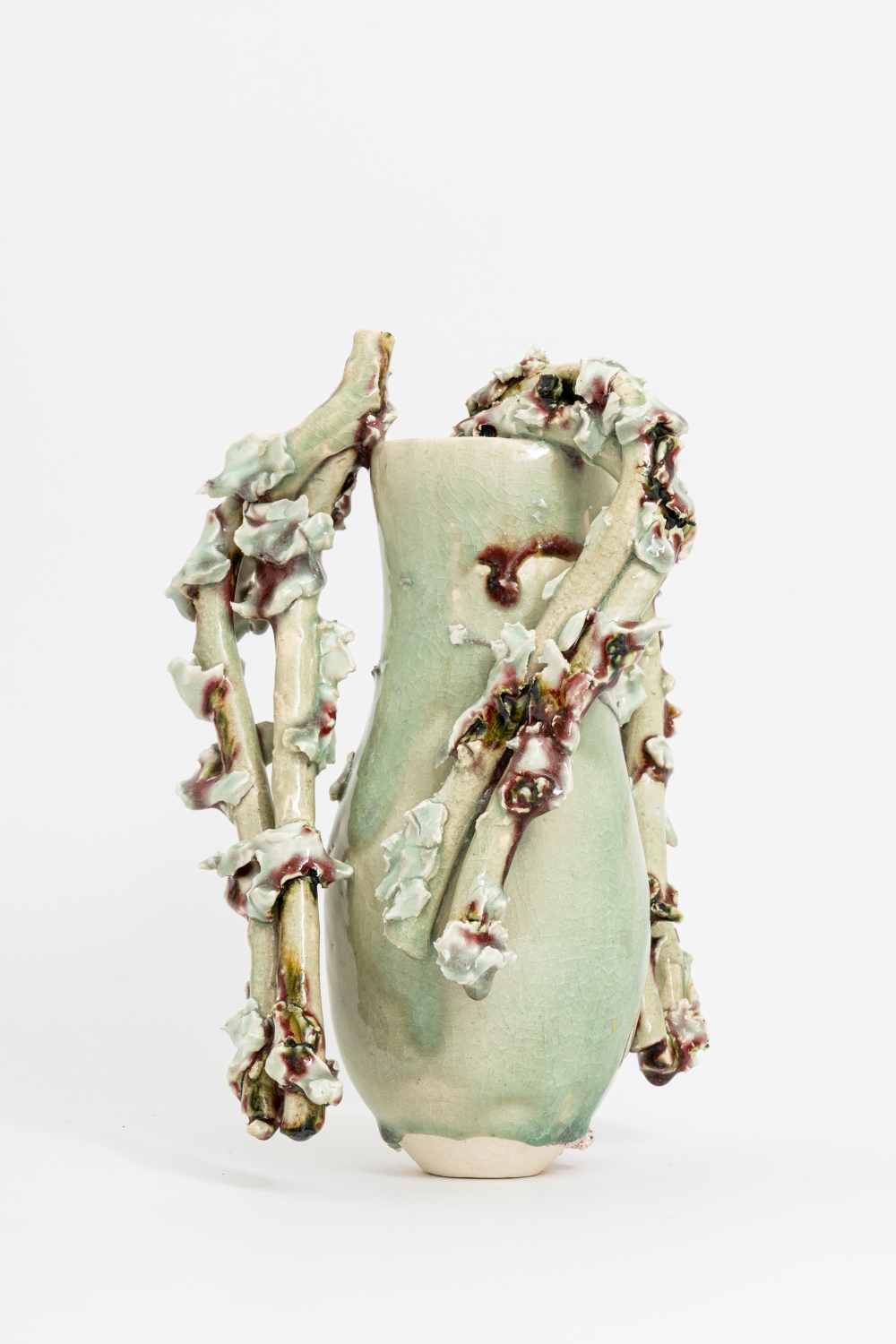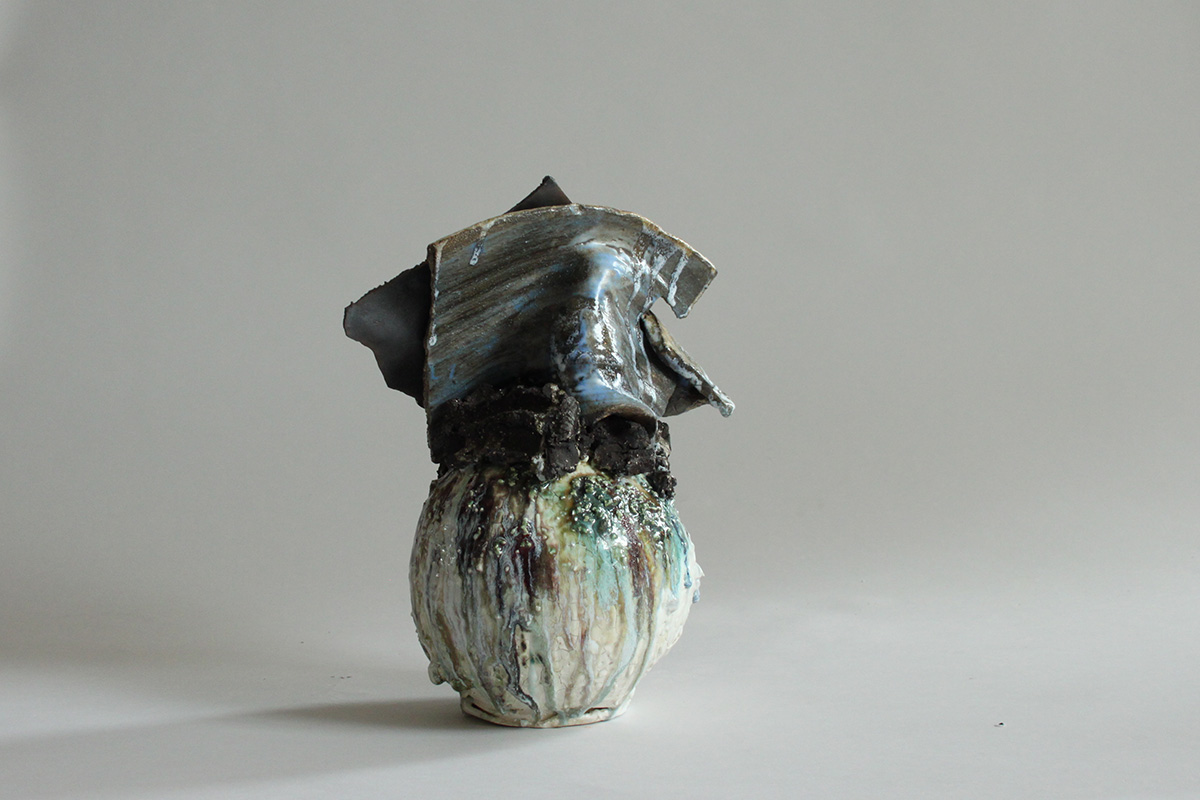Brook Sigal is a ceramist with ‘the desire not to be certain’. Born in Puerto Rico in 1962, she lived around Europe from an early age. Sigal started ceramics as an autodidact when she was 35 and apprenticed with Jane Perryman, Marcus O’Mahoney, and Shozo Michikawa. In 2007, she founded BiS productions, to design and produce tableware and glassware for luxury brands. She proposed new visions of terracotta floors to the 400-year-old Manuffatura Cotto di Martino, Salerno, Italy, and produced four techniques of lower relief, precision cut, maiolica, and sgraffito under the name “Terratheque”.
For 15 years, while still a production ceramist and ceramic designer, she landed, by chance and for welcome income, a freelance job as a researcher and coordinator of documentaries for Arte and Canal+ television companies. Around the same time, she decided to do a Master’s in Ceramics at Central Saint Martins, graduating in 2015 with the eco-project ‘Making Water’. This project was exhibited at London and Milan Design Week, Devon Guild of Craftsmen, and Water Futures in Milan. This project was published in ’75 Designers pour un Monde Durable’ by Genevieve Gallot, Éditions la Martiniere, and is used by schools and universities as a case study in sustainability.
She participated in the British Ceramics Biennale in Stoke on Trent, UK, where she made a woven tile carpet in collaboration with Marta Bordes Blanco. This work was initially commissioned by the V&A (Victoria & Albert Museum)-Blythe House, London, to encourage designers to use the museum’s archives through traditional craft techniques and introduce transversal research as a tool to develop new craftsmanship.
In 2018, armed with more courage, she returned to her autodidactic roots and pursued the arduous route of ceramic art. With the ceramist Claudia Cauville, she opened La Mine Studio in Paris as a place to experiment and produce her sculptural ceramics and glazes and teach and coordinate masterclasses with Linda Bloomfield.
In 2023, ‘if only one more day’ was selected for the 62º International Ceramics Biennale in Faenza, and in 2024, she did residencies in KultuuriPaivakoti, Finland, and Guldagergaard International Research Center, Denmark, to walk, write haikus and explore the complexities of clay expressed through distressed, twisted, perforated non-vascular shapes and enriched glazes.
Visit Brook Sigal’s website and Instagram page.
Featured work
Reactivity as Shape, New works, 2023-2024


Through a rich ‘composting technique, I create one-off pieces that bring topical emotions to the surface. My references are personal, aligning them to books, photographs and walks.
Texture and Colour engage in these new works as the result of being responsive to possibilities and changes as they occur. All assumptions of form are distressed, twisted, and assembled into their non-vascular shapes. And it is also the case of learning to let go. Added surfaces and openings are frozen precisely at the interface between mental decisions and practical realization on the material itself – where gestures and choices meet ceramics. These works can be perceived as provocatively disharmonious with a fragile equilibrium, bursting with flaws and cracks which are purposely accepted and accentuated.
Familiar forms are latent and become obsolete as the lacerations expand these pieces’ structural integrity and capability by destabilizing tension’s very nature and design. Voluntarily and involuntarily, shapes move into new positions in the kiln and the archetypical form is made even more apparent.
Ceramics is the process and material that gets me closest to my ‘desire to not be certain’.What initially drew me to clay was beginner’s luck immediately followed by its complexity. This suits me perfectly. My favorite pottery tools are simple: the whirler and my hands. Neither optimist nor pessimist, when opening the kiln, I am open.
I feel that the Ceramic Art scene has lost their art movements; where are the Japanese schools, the Arts and crafts movement, etc.… that once upon a time would organically together like-minded, experimental, process-sharing artists? Today, ceramic art is a solitary practice where competition to play a part in a fast-paced trend is the reality of the ceramic artist.
What next? Be part of an art movement, OR to see my work in the arms of an art gallerist ‘flogging’ it at a high price in the street like a fruit vendor, side by side with family china in a Sicilian castle, as a prop in the Netflix series ‘Vikings’.













